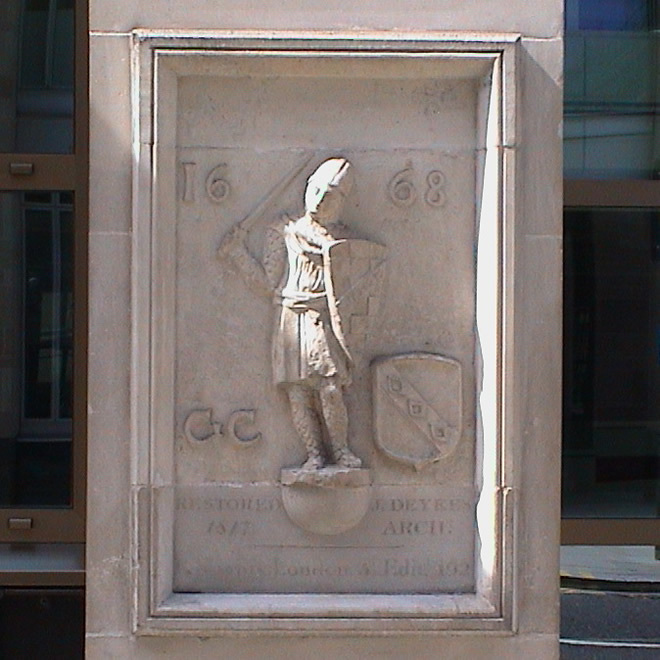{At the knight's head:}
1668
{To the left of his legs:}
G C
{Below the knight's feet is a, relatively, newer stone, on which is inscribed:}
Restored - 1817
J. Deykes - Archt.
Pennants London's 5th Editn. 492
Internet Archive, Survey of London gives: "On the north-west corner of Warwick Lane is an effigy of Guy, Earl of Warwick. He is dressed as a knight in armour, and the stone bears date 1668." The British Museum agrees with that identification of the figure.
This location seems to have been the site of a Warwick Inn, owned by the Earls of Warwick (including Richard Neville, 16th Earl) since about 1450, and lost in the Great Fire of 1666.
Pennant's London apparently has something to say about this item in the 5th edition, on page 492. We are surprised to find such a reference carved in stone, but there it is. The 1817 restoration must be when the clearly visible additions were made top and bottom.
We have found two other comparable plaques of similar date: St Olave, Silver Street - destroyed and Boy and Panyer. Spitalfields Life has an excellent post on old London signs, which includes early photos of the Warwick plaque and the Boy and Panyer.
Site: Guy, Earl of Warwick (1 memorial)
EC1, Warwick Lane















Comments are provided by Facebook, please ensure you are signed in here to see them